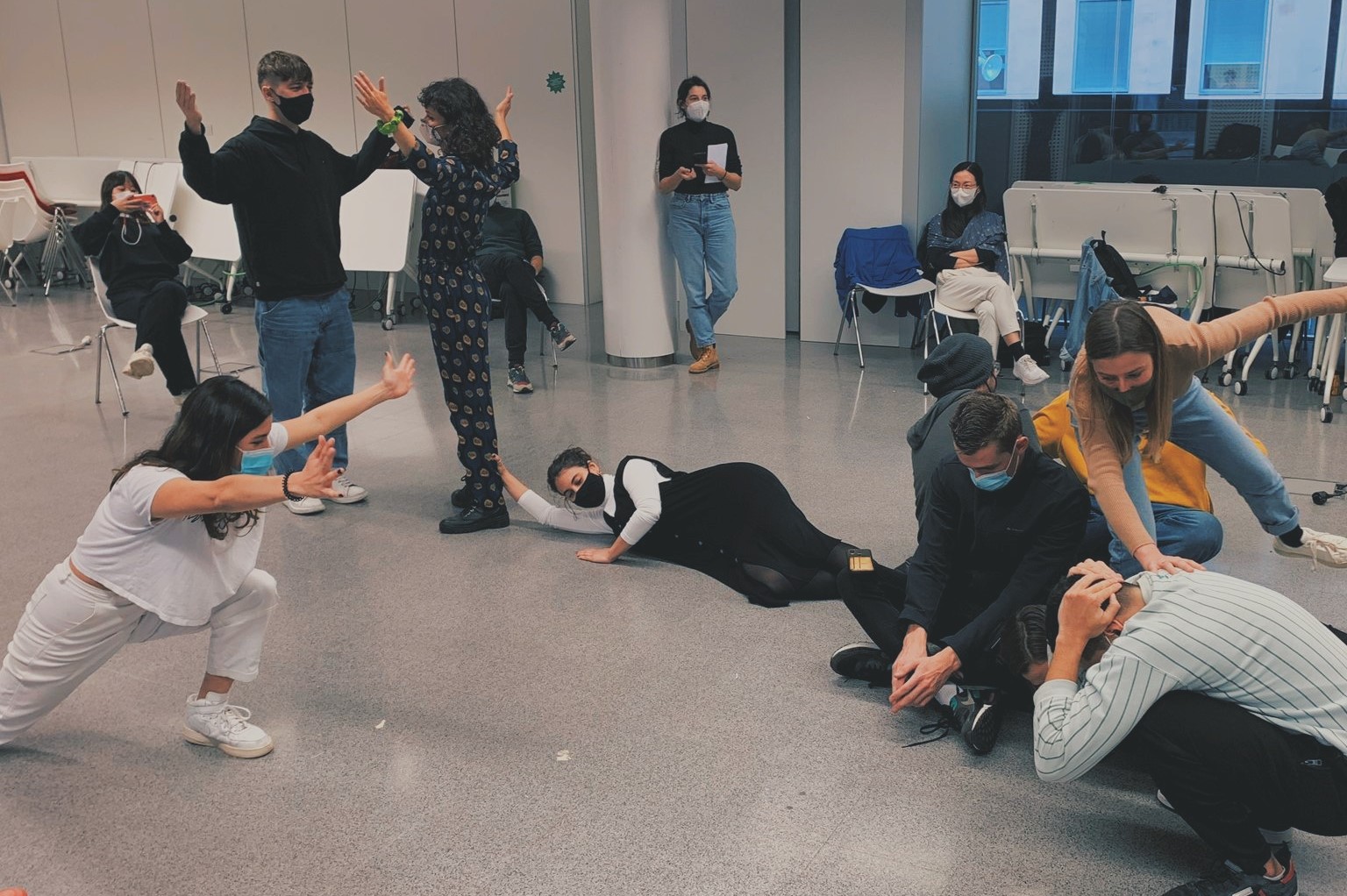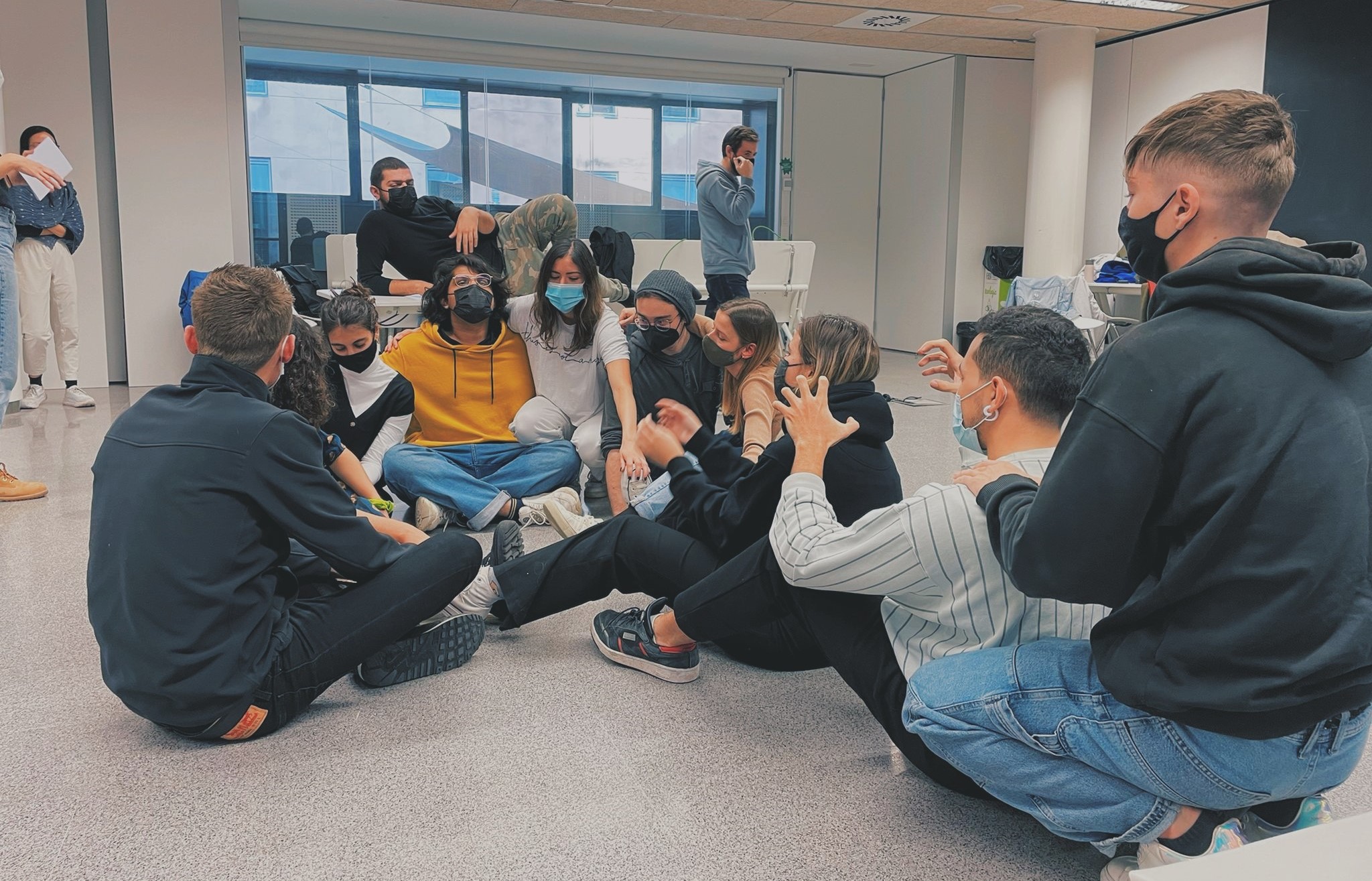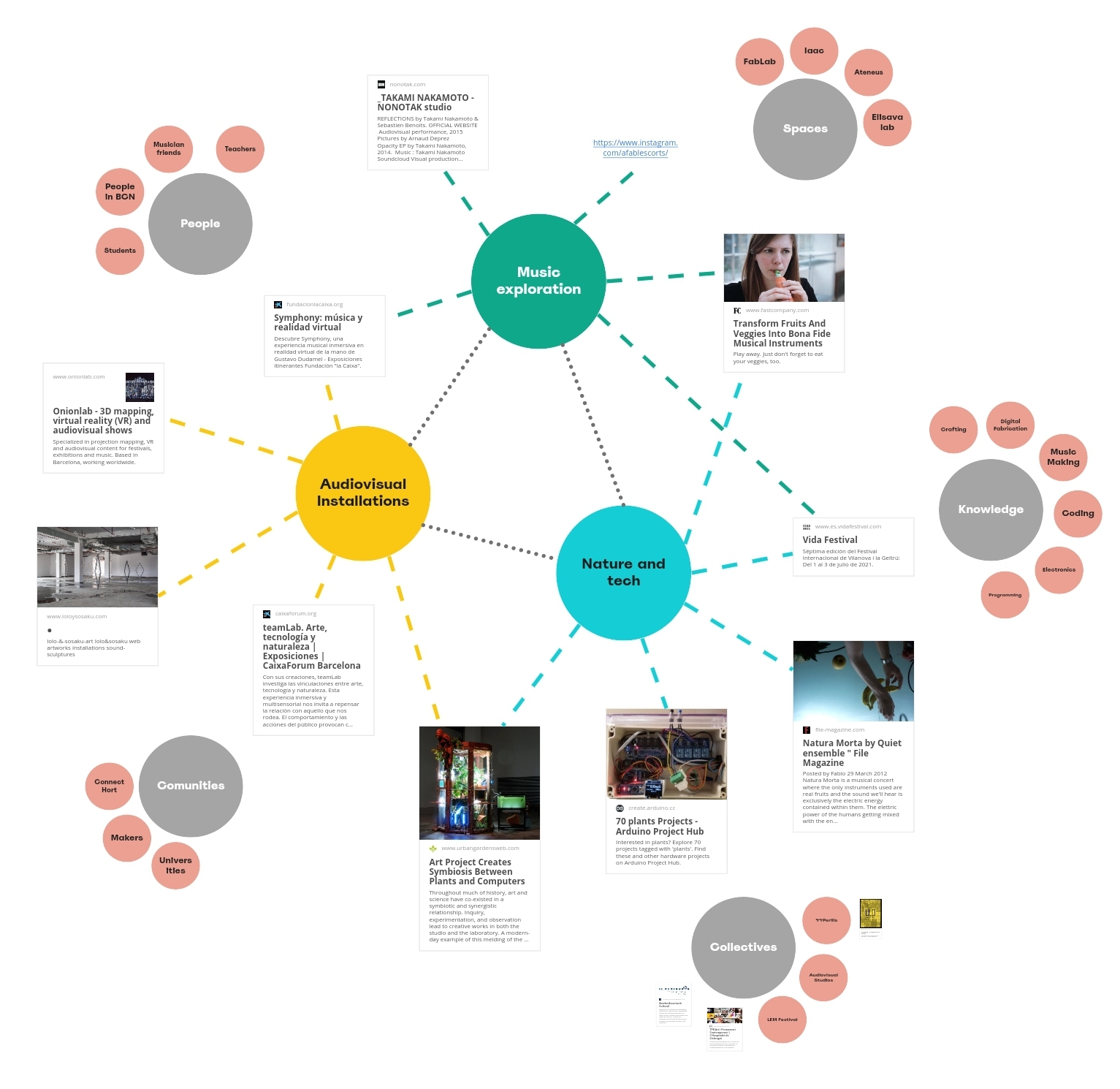/weekEight.community_engagement
(28_november_2021)
This week, Mercè and Markel from HOLON conducted the sessions related to
community engagement. In these classes, the members of HOLON made us think
about our way of designing and creating, where often our vision is not always
open and all the effort is focused on developing the project individually.
This way of working that we follow is so integrated that it doesn't allow you
to contribute to a common objective, which is why Markel and Mercè suggested
that we act differently: before establishing a specific project idea, observe
and try to investigate what projects there are around your idea, what
communities exist and what tasks are being done, how the topic you want to
work on is approached from other perspectives. Taking all these factors into
account, you may be able to contribute much more to your target, and you may
also be able to participate in a network of projects focused on the same topic.


.community_activities
During the four days of this course, we worked on our collaborative design intervention
and focused the exercises proposed to us on the theme that each group had chosen.
The first exercise proposed to us to create a stronger basis for our interventions
was to create a mapping of the projects in Barcelona and its surroundings related to
our theme. In our case, the group formed by Chris, Juaco and myself, our main topics are
technology, music and nature. From there, we started to look for communities and projects
around these subjects, separately and also combining them (nature-technology,
music-technology, nature-music). This was the result of our mapping:

After this, we had to analyse in a more precise way the role of the actors involved
in our map. The aim of this second exercise was to get to know in more depth what
tasks the other communities and individuals are carrying out in order to define more
clearly what the direction of collaboration and contribution in the field could be.
Therefore, we chose the agent that we thought could be most relevant and defined the
following topics: context, current situation, engagement & limits, theory of change
and design opportunities.

Finally, starting from a multiscalar diagram, we had to situate the agents of our
map according to four different levels of impact on the matter in question: parameters,
feedback, design and intervention. This allowed us to see how the agents involved
to our topic are related to the global scene and the role of each of the parts.